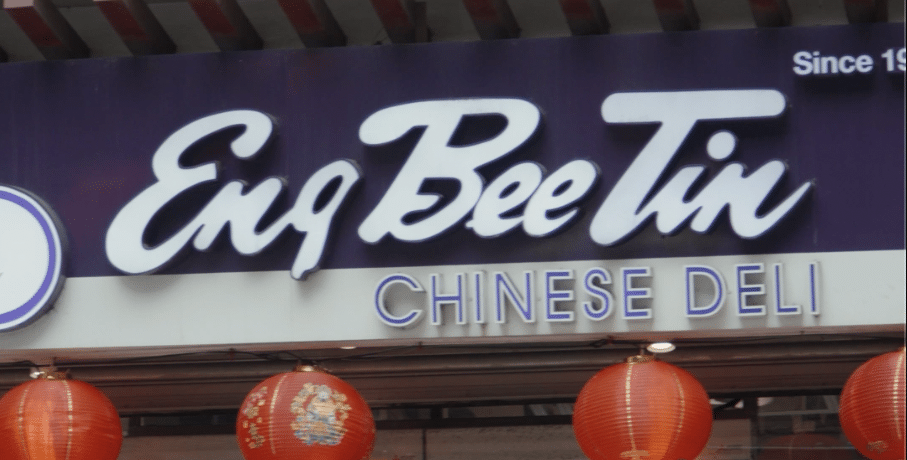NOW that the Year of the Water Rabbit has come, many Chinoys are sure to have feasted on so much food as part of the celebrations.
And among all the dishes and delicacies served on the table, the highlight is always the tikoy.
Tikoy is expected to be on the table of every Chinese family during the lunar new year. In Chinese culture, it is believed that tikoy symbolizes tight family bonds, smooth flow of money and handling of problems, and the sharing of prosperity.
Among the famous sellers of tikoy is Eng Bee Tin, which is the original and longest running store of Chinese delicacies in the Philippines, having been established in 1912.
It has also become known for its hopia, especially the ube-flavored one.
Chinese diaspora
The store was established because of the hard work of a penniless migrant.
The story of the founder of Eng Bee Tin is not far from that of other mainland Chinese (tai diok lang) who ventured to the Philippines from China to search for greener pastures.
Roche Chua, the 27-year-old finance deputy of the Eng Bee Tin, shared with republicasia the story behind the success of the famous store.
Starting from scratch
Roche said her great grandfather, Chua Chiu Hong, migrated from Fujian, China to Manila.
“China was experiencing famine, most especially that part [Fujian province] of China,” she said.
Chua Chiu Hong rode a boat to go to the Philippines and had no one and nothing at all when he arrived, she said.
“When he arrived here, he had no one. But there were initial batches of people from Fujian. He actually worked for someone as a baker in exchange for shelter and food. No salary back then,” she said.
Eventually, her great grandpa learned the craft of baking and started his own bakery, and this is when Eng Bee Tin was established.
“it started like a typical panderia. Yung hopia nilalako,” she said.
Business strategies
Chua Chiu Hong’s way of selling the hopia was through consignment, she said.
He also had a lot of strategies to make sure nothing would be wasted, she noted.
“Let’s say yung binigay mong natira sa’kin, hopia monggo siya, then let’s turn it into hopia baboy para hindi sayang,” she said.
Eventually, Chua Chiu Hong passed his hopia business on to his son. But the latter had no interest and knowledge in doing the business and let the master baker handle the operations.
But this baker later transferred to another business, and Chua Chiu Hong’s bakery went bankrupt.
Stepping up with ube
Gerry Chua, the eldest among the grandchildren of Chua Chiu Hong, had to step up to take over the business as he couldn’t accept that it was falling apart.
“My father was like college level at that time. He was the eldest among their siblings and he had to step up kasi they had seven cheques bouncing everyday,” Roche recalled.
At the age 16, Gerry was a one man team doing everything he could to save their dying business.
“They had no money to pay workers or laborers, so he had to do it all by himself. He would bake hopia by himself. He had to go to the market to buy raw materials. He persevered, but it wasn’t an easy task,” she said.
The first solution he thought of was changing the oil from lard into corn oil.
“My dad wanted to change the hopia because the hopia before was matigas. Pag matigas siya, hindi siya masarap kainin,” she said.
Following the change of oil, Gerry thought of coming up with an ube-flavored hopia. He got the idea when he went to a supermarket and learned that ube is the best selling ice cream flavor. So the young Gerry looked for ube in Pampanga and mixed it with his hopia.
Originally, baboy, monggo and kondol were the only flavors of hopia.
But the ube flavor became a huge success for Eng Bee Tin. It’s also the reason why the color of its stores is inspired by the color of ube.
TV exposure
Roche also said that aside from being a hands-on baker, her dad was a fire volunteer, and this was another key factor in the success of Eng Bee Tin.
She recalled that TV personality Cory Quirino met her father and invited him to an interview about hopia after she did a story on Chinese fire volunteers.
Quirino interviewed Gerry about firefighting and asked about his background. He told her that he works with Eng Bee Tin, and that he invented hopia ube.
“After two weeks, the assistant of Ms. Cory really called and then scheduled another interview,” Roche said.
The TV exposure helped generate publicity for the store and attracted more customers. The business has grown since.
Paying it forward
Roche said Eng Bee Tin continues to support fire volunteers as it led to the biggest change that happened in their business.
“If you rewind the story, he wouldn’t have been featured as a hopia maker if he wasn’t featured as a fire volunteer. So right now, Eng Bee Tin, our group of companies, has already donated at least 10 fire trucks and ambulances because it’s our way of paying it forward,” she said.








